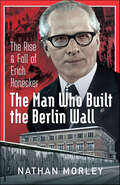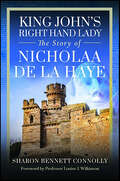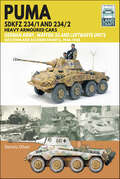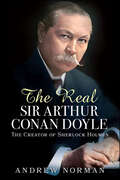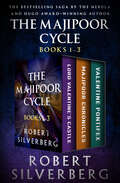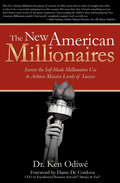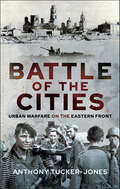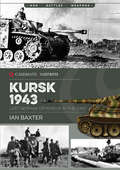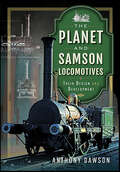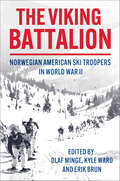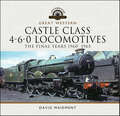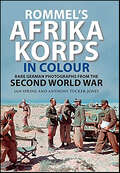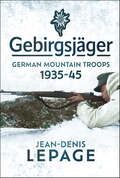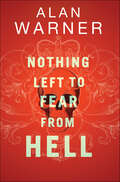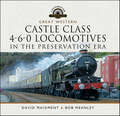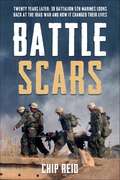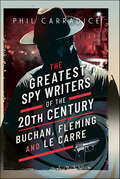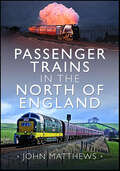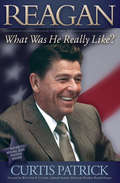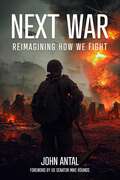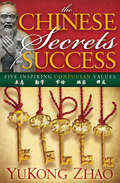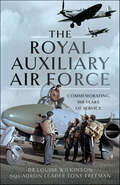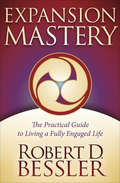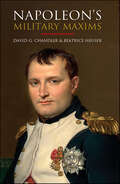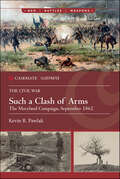- Table View
- List View
The Man Who Built the Berlin Wall: The Rise & Fall of Erich Honecker
by Nathan MorleyThe first ever English language biography of Erich Honecker, covering his entire life and career. In The Man Who Built the Berlin Wall, Nathan Morley brings to life the story of the longtime leader of the German Democratic Republic. Drawing from a wealth of untapped archival sources – and firsthand interviews with Honecker’s lawyers, journalists, and contemporary witnesses – Morley paints a vivid portrait of how an uneducated miner’s son from the Saarland rose to the highest ranks of the German Communist Party. Having survived a decade of brutality in Nazi prisons, Honecker emerged as an ambitious political player and became the shadowy mastermind behind the construction of the Berlin Wall in 1961, a crucial moment in twentieth-century history. Although frequently on the verge of being relegated to obscurity, he managed to overthrow strongman Walter Ulbricht at the height of the Cold War and reigned supreme over the GDR between 1971-1989. However, by 1980, the Honecker honeymoon was on the wane as a decade of economic and social difficulties blighted the GDR. Then, as tumultuous changes swept through the Soviet bloc, everything in and around him collapsed in 1989. His health, his certainties, his ideology, his apparatus of power, and his beloved SED party. Terminally ill, he was literally kidnapped from Russia to answer for his crimes in a Berlin court. A controversial figure, Honecker’s notorious philandering, his difficult relationship with his wife Margot, penchant for porn, addiction to hunting, and gilded lifestyle at a forest settlement north of Berlin are all brought into sharp focus. Although haunted by the fall of the Berlin Wall, Erich Honecker died in 1994, still believing the GDR was the envy of the world.
King John's Right Hand Lady: The Story of Nicholaa de la Haye
by Sharon Bennett ConnollyIn a time when men fought and women stayed home, Nicholaa de la Haye held Lincoln Castle against all-comers. Not once, but three times, earning herself the ironic praise that she acted ‘manfully’. Nicholaa gained prominence in the First Baron’s War, the civil war that followed the sealing of Magna Carta in 1215. Although recently widowed, and in her 60s, in 1217 Nicholaa endured a siege that lasted over three months, resisting the English rebel barons and their French allies. The siege ended in the battle known as the Lincoln Fair, when 70-year-old William Marshal, the Greatest Knight in Christendom, spurred on by the chivalrous need to rescue a lady in distress, came to Nicholaa’s aid. Nicholaa de la Haye was a staunch supporter of King John, remaining loyal to the very end, even after most of his knights and barons had deserted him. A truly remarkable lady, Nicholaa was the first woman to be appointed sheriff in her own right. Her strength and tenacity saved England at one of the lowest points in its history. Nicholaa de la Haye is one woman in English history whose story needs to be told…
Puma Sdkfz 234/1 and Sdkfz 234/2 Heavy Armoured Cars: German Army and Waffen-SS, Western and Eastern Fronts, 1944–1945 (LandCraft)
by Dennis Oliver"....a well-researched title that covers a lesser known type and that manages to squeeze a heck of a lot into 64 pages." —WarWheels The lightning advances of the German armored units during the Polish and French campaigns were spearheaded by fast-moving, armed reconnaissance vehicles. But these early designs suffered heavily due to their light weaponry and thin armor and a program was soon underway, led by the firm of Büssing-NAG, which culminated in the development of the Sdkfz 234 series of heavy eight-wheeled armored cars, the first of which entered service in late 1943. These vehicles proved to be rugged and reliable and were gradually up-armed to serve in the infantry support role and eventually as tank killers. This volume of the LandCraft series concludes the story of the Sdkfz 234 series, examining the versions that took part in the last battles of the war. Using archive photos and extensively researched color illustrations Dennis Oliver examines the Sdkfz 234/1 and Sdkfz 234/2 and the units that operated these often neglected, yet important, armored vehicles. A key section of his book displays available model kits and aftermarket products, complemented by a gallery of beautifully constructed and painted models in various scales. Technical details as well as modifications introduced during production and in the field are also examined, providing everything the modeler needs to recreate an accurate representation of these historic tanks.
The Real Sir Arthur Conan Doyle: The Creator of Sherlock Holmes
by Andrew NormanIn the year 1900, Sir Arthur Conan Doyle was at the height of his success as a qualified doctor, keen sportsman, writer of historical novels, champion of the oppressed and, most notably, the creator of that honorable, fearless, and eminently sensible master-detective Sherlock Holmes. Every new Holmes story was greeted with great anticipation and confidence in the knowledge that, however complex the crime, the supremely intelligent and logical detective would solve it. But in 1916 Conan Doyle surprised his readers by declaring that he believed in spiritualism. And when, in 1922, Doyle published a book in which he professed to believe in fairies, his devotees were nonplussed. How could the creator of the inexorably logical Sherlock Holmes claim to believe in something as vague, esoteric, and unproven as the paranormal? In this fascinating study of the life of the creator of one of the greatest detectives of all time, Dr Andrew Norman traces the origin of Sir Arthur Conan Doyle’s strange beliefs. Can it be that Doyle’s alcoholic father holds the key to the unanswered questions about his son? What was Doyle’s involvement in the notorious ‘Cottingley Fairies’ affair? By delving into medical records and the writings of Doyle himself, Dr Norman unravels a mystery as exciting as any of the cases embarked upon by the great Sherlock Holmes!
The Majipoor Cycle: Lord Valentine's Castle, Majipoor Chronicles, and Valentine Pontifex (The Majipoor Cycle)
by Robert SilverbergThe first three novels in the acclaimed sci-fi fantasy series from the award-winning author: &“An imaginative fusion of action, sorcery, and science fiction&” (The New York Times Book Review). In the first three books of the Majipoor Cycle, Hugo and Nebula Award–winning author Robert Silverberg delivered a vast and vividly imagined world full of epic adventure, court intrigue, and high drama. In Lord Valentine&’s Castle, an amnesiac wanderer receives dreams of his true destiny as ruler of the planet Majipoor. In Majipoor Chronicles, the planet&’s bloodthirsty history is revealed through tales of rulers and thieves. And in the final novel, Valentine Pontifex, Valentine faces the threat of civil war as well as conspiracy within his court.
The New American Millionaires: Secrets the Self-Made Millionaires Use to Achieve Massive Levels of Success
by Dr. Ken OdiwéLessons from immigrants who have prospered against the odds: &“Marvelous.&” —John Harricharan, author of When You Can Walk on Water, Take the Boat Over decades and centuries, people have come to the United States—often fleeing desperate circumstances, with next to nothing in their pockets and not even speaking the language. Yet many find extraordinary success in America, some even within a single generation of their arrival. The New American Millionaires focuses on a number of high profile immigrant millionaires living and working in the United States. Through their stories—and his own—Dr. Ken Odiwé reveals the specific qualities and attributes of the new American millionaire. These qualities and attributes are then broken down into a series of action steps that any entrepreneur can take to embark on a path of similar success. Supported by nearly a decade of research and interviews with new American millionaires, this is a guide that can inspire and inform anyone who wants to tap into their own sense of courage and adventure.
Battle of the Cities: Urban Warfare on the Eastern Front
by Anthony Tucker-JonesA concise and vivid history of the urban war on the Eastern Front. The Stalingrad battle and the Leningrad siege were just two of the brutal, devastating urban conflicts that marked the awful struggle between Germany and the Soviet Union during the Second World War. The cities were strategic fixed points in the sweeping advances and retreats of the opposing armies across eastern Europe. Yet no one has concentrated on these city battles before or has sought to tell the story of the campaigns through the fighting that took place in and around them. That is Anthony Tucker-Jones’s purpose in this concise and vivid history of the urban war on the Eastern Front. Early in the war, during the Wehrmacht’s crushing offensives of 1941 and 1942, the Red Army was forced out of a series of key cities. Moscow was threatened, Leningrad surrounded. Then, after the climactic battle at Stalingrad, the Red Army with increasing confidence, speed and power drove the Germans from the Soviet and East European capitals they had occupied. The final urban battles were fought in Germany's cities, culminating in Berlin. As he traces the course of the fighting for each city, Anthony Tucker-Jones looks at the local circumstances, the opposing forces, the strategic significance and the tactics employed. He focuses not only on the destruction and cruelty of such warfare, but on the heroism displayed on both sides and on the fate of the civilians who found themselves on the front line.
Kursk 1943: Last German Offensive in the East (Casemate Illustrated #Cis0014)
by Ian BaxterAn illustrated history of World War II&’s largest tank battle that went down near the Russian city. In the summer of 1943, Nazi Germany launched Operation Zitadelle (Citadel), aimed at cutting off Soviet forces in the Kursk salient. This offensive resulted in the Battle of Kursk. Kursk quickly became a fierce contest of attrition, as Wehrmacht and elite Waffen-SS Panzer-Divisions with their powerful Tiger and Panther tanks unsuccessfully tried to hammer their way through the intricate lines of strong Soviet defensive positions. What followed was unabated fighting for two weeks as German units were slowly and systematically ground down in a series of brutal armored battles. During this ferocious fighting the Red Army savagely contested every foot of ground, finally ending German invincibility forever. For the first time in its short history, the blitzkrieg concept had failed. The reverberations caused by the defeat at Kursk were immense, and never again did the German war machine go on the offensive in the East. Stiff defensive action was now the stratagem placed upon the dwindling Panzerwaffe right to the gates of Berlin. With comprehensive captions and text, Kursk 1943 tells the story of this dramatic battle using rare and unpublished photographs, maps, and highly detailed artist profiles. The book reveals the events leading up to the battle in the first half of 1943 and the buildup of forces by both sides before their climatic showdown at Kursk.
The Planet and Samson Locomotives: Their Design and Development
by Anthony DawsonRobert Stephenson’s Planet class locomotive was the first true design of mainline express passenger locomotive. Delivered less than a year after Rocket it was one of the most successful early locomotive designs. Planet set the mold for British locomotive design for more than the next century featuring a multi tubular boiler; inside cylinders; crank axle; and the first use of proper frames. The Planet class, and its 0-4-0 Samson derivative, found use across Britain with examples being supplied to railways in London and Glasgow. The Planet class proved popular in Europe too with examples being first exported and then built in France. Two were exported to Austria, and the first locomotive to steam in Russia was based on the design. Planet and Samson also crossed the Atlantic with more examples being built in the United States than in Europe. A working replica of the revolutionary design was built in Manchester in 1992: the first mainline express passenger steam locomotive to be built in Britain since the 1960s. This book outlines the technical design of the Planet and Samson locomotive, and charts the careers of the class members at home and abroad.
The Viking Battalion: Norwegian American Ski Troopers in World War II
by Kyle Ward Olaf Minge"What is engaging about this book is that you get to hear the authentic voices of the soldiers through their memoirs, journal entries, and letters. Some are long, some are short, but all are worth reading for the insights you get into the minds of the ordinary soldier and what catches his eye." — The Norwegian American Hidden in the crevasses of World War II history is the story of the 99th Infantry Battalion (Separate). A small unit that rarely gets any attention, it is part of a fascinating story. Alongside battalions of Austrian, Greek, Filipino and Japanese Americans, the Army decided to create an all Norwegian American battalion, originally trained at Camp Hale, Colorado, along with the 10th Mountain Division, with the original mission of liberating Norway. Their exploits during training brought them enough notoriety that members of the 99th were recruited to start the First Special Service Force and a branch of the OSS. Although they were not initially sent to Norway, they would fight in Normandy, across France and Belgium, helped entrap the Germans at Aachen, protected the city of Malmedy during the Battle of the Bulge (where they stopped an attack by Skorzeny and a SS Panzer Division), helped liberate Buchenwald, guarded the Nazi treasures found in Merkers mine and finally served as the Honor Guard for King Haakon VII on his triumphant return to Norway. This book tells the story of the 99th Infantry Battalion through an anthology of rarely, if ever, previously seen memoirs, journals, letters and newspaper articles written by or about the Viking soldiers.
Great Western Castle Class 4-6-0 Locomotives: The Final Years 1960–1965 (Locomotive Portfolios)
by David MaidmentThe author’s second volume about the Great Western’s classic express locomotives covers their final six years in British Railways service. In 1960 the Castles, many now modernized with double chimneys and 4-row superheaters, were still in charge of most of the Western Region’s expresses, but by the summer of 1963 their regular express work was limited to the London – Worcester route. Their declining numbers in the last couple of years covered special summer and relief trains, parcels and freight work, deputizing for failed or unavailable diesels and a flurry of excursions and railtours where their prowess could still be demonstrated. The author worked and lived alongside them in these years and the book includes much of his own personal experience on the footplate, on their trains and on shed. The book recaps briefly their first 25 years and covers their history, operation and performance in their final years and is copiously illustrated including over 100 color photographs.
Rommel's Afrika Korps in Colour: Rare German Photographs from the Second World War
by Anthony Tucker-Jones Ian Spring"A marvellous collection of original wartime colour photos…For both historians and modellers, the variations in uniforms and their colours will be a great reference..." — Military Model Scene Take a visual journey through North Africa during the Second World War with Anthony Tucker-Jones and Ian Spring as they chart the path of Erwin Rommel and his Afrika Korps through a series of stunning, rare color photographs. Taken from Ian Spring’s incredible digital archive of over 32,000 original color photographs dated between 1936 and 1946, more than 250 images in Rommel’s Afrika Korps In Color offer readers a vivid, detailed insight into this German expeditionary force and their long North African Campaign. Fascinating color photographs of German soldiers, weaponry, tanks and aircraft fill these pages, and are balanced by the equally captivating and rare photographs of the people and the landscapes of North Africa. Renowned author and military historian Anthony Tucker-Jones’ remarkable text accompanies Ian Spring’s collection of rare photographs, together making for a highly informative and utterly engrossing read. Rommel’s Afrika Korps In Color affords readers a new way of reading and learning about one of the most unique campaigns in the Second World War, and will stay with them long after they turn the final page.
Gebirgsjäger: German Mountain Troops, 1935–1945
by Jean-Denis LepageA concise history of the Gebirgsjäger’s employment, which saw them in action on every front, from Lapland in the North to Tunisia in the south, and throught the war, from the invasion of Poland to the final defense of Germany. The Gebirgsjäger were officially formed in 1935 following Hitler’s rejection of the Treaty of Versailles, although the required skills had been fostered in preparation through civilian climbing clubs. They were recruited predominantly from the southern mountainous parts of Germany – Wurtemburg and Bavaria – and from Austria, where Alpinism and mountain warfare had a long tradition. Rigorously trained in skiing, climbing and other demanding skills of mountain survival and combat, they formed an elite within the German army, distinguished by the distinctive Eidelweiss cap badge adopted in 1939. Jean-Denis Lepage gives a concise history of the Gebirgsjäger’s employment, which saw them in action on every front, from Lapland in the North to Tunisia in the south, and throught the war, from the invasion of Poland to the final defense of Germany. He then gives a detailed description of their uniforms and insignia, equipment, organization, training and tactics. The book is clearly illustrated throughout with over 170 of the author’s own line drawings.
Nothing Left to Fear from Hell: Darkland Tales
by Alan WarnerA battle lost. A daring escape. A long walk into obscurity. The ultimate failure… In the aftermath of the disastrous Battle of Culloden, a lonely figure takes flight with a small band of companions through the islands and mountains of the Hebrides. His name is Charles Edward Stuart: better known today as Bonnie Prince Charlie. He had come to the country to take the throne. Now he is leaving in exile and abject defeat. In prose that is by turns poetic, comic, macabre, haunting and humane, multi- award-winning author Alan Warner traces the frantic last journey through Scotland of a man who history will come to define for his failure. 'Written in carefully crafted prose shot through with cleverly-deployed alliteration and assonance, this reimagining of Charles Edward Stuart’s escape from Culloden is a triumph' – Stuart Kelly, The Scotsman
Great Western Castle Class 4-6-0 Locomotives in the Preservation Era (Locomotive Portfolios)
by David Maidment Bob MeanleyThis third volume in the series on the Great Western Castle class locomotives focuses on the eight that have been preserved and goes into depth on the reconstruction of three of them, the two Tyseley ones, 5043 and 7029 described by Bob Meanley and Didcot’s 4079 recounted by David Maidment from the records of the Great Western Society, including the full story of 4079’s prolonged stay in Western Australia, its return to the UK and subsequent restoration. The history of all eight is covered and copiously illustrated, including over 100 color photographs, with many during the restoration work by Bob Meanley and in operation by David Maidment. The book includes records of their operation and performance since restoration when some of the most remarkable performances of these locomotives were achieved.
Battle Scars: Twenty Years Later: 3d Battalion 5th Marines Looks Back at the Iraq War and How it Changed Their Lives
by Chip ReidA unique insight into how combat in Iraq has shaped the lives of a battalion of young Marines. The most eye-opening, and terrifying, story in Chip Reid's career as a journalist was the six weeks he spent with 3d Battalion, 5th Marines, during the invasion of Iraq in 2003, as a correspondent for NBC News. Traveling shoulder-to-shoulder with the young Marines, he had unparalleled access, witnessing them in combat, and interviewing as many as he could persuade his bosses to put on air, allowing them to tell their war stories in their own words. It took only 22 days for the Marines of 3/5 to fight their way to Baghdad, but the effects on those who fought have lasted a lifetime. They lost a number of their own in battle, and others suffered life-threatening injuries. Of those who returned - even if they avoided physical scars - many have had to find their own way through survivor's guilt and the nightmare of Post-Traumatic Stress Disorder, with all its attendant miseries. Twenty years on, Chip sat down with the Marines of 3/5 once more. They told Chip inspiring stories of heroism in battle, of camaraderie and comrades lost, of patriotism and belief in mission, of recovery and success in both military and civilian life, and of the new appreciation for life that results from Post-Traumatic Growth. Visceral and searingly honest, this book is a tribute to the Marines for their service, and for the many sacrifices they made then, and that many still make today.
The Greatest Spy Writers of the 20th Century: Buchan, Fleming and Le Carre
by Phil CarradiceThe spy novel has, over the past hundred years, become one of the most popular literary genres. The best exponents have become household names, as have their characters, heroes and villains alike. From Richard Hannay to James Bond and George Smiley, the spies and spy-hunters of fiction have developed from the printed page to grace the movie and television screens - with huge success. Uncovering the greatest or best spy writers of the Twentieth Century has not been easy. There are so many to choose from. Ultimately, however, the choice has come down to three highly significant and successful exponents of the art, writers who cannot be ignored but, more significantly, who were leaders, movers and shakers in the art of writing spy fiction. John Buchan was at the forefront, arguably the first in a long line of spy writers - and still one of the finest. Classic tales like The Thirty-Nine Steps and Greenmantle set the benchmark for everyone else to follow. Ian Fleming's creation of James Bond in books like Goldfinger and From Russia with Love took the spy novel to new heights of glamor and exotic settings. John le Carre's world of spies, double-dealing, betrayal and seedy backstreet assignations is the very antithesis of Fleming's Bond but its realism and stark reality took the art of spy fiction to a new level. Buchan, Fleming, Le Carre, arguably the greatest spy writers of the Twentieth Century. Do you agree? Read the book and make your own judgement. Whatever you decide, you will not be disappointed by the writing and the judgements.
Passenger Trains in the North of England
by John MatthewsPassenger Trains in the North of England features over 270 black and white pictures and takes the reader northbound from South Yorkshire and Cheshire to the Scottish Borders. Also covered in detail are a wide selection of pictures from Cumbria, West and North Yorkshire among others. We see main line expresses, branch line and local trains, plus special workings running along today’s railways and lines that have faded into history. Steam, diesel and electric powered trains are pictured right across the North of England including industrial and city views plus a great selection taking in the highly picturesque locations of the northern hills and Dales. Embracing a period of 65 years the book features images from as early as 1957 right through the late steam era up to the present day. The stars of the book are obviously the trains of the past, but just as important are the top photographers who have kindly provided these high-quality pictures for your enjoyment. While the author has sneaked a few of his own efforts in, the main contributions come from the great names of the railway photography world including Gavin Morrison, Les Nixon, Peter Fitton, John Whiteley, John Cooper Smith and others.
Reagan: Volume 2 (Reagan: What Was He Really Like? #2)
by Curtis PatrickBehind-the-scenes anecdotes and first-person recollections from forty-nine diverse people illuminate their personal relationships with Ronald Reagan. What was Ronald Reagan like in private? How did he treat his children? How did he handle pressure? This collection of intimate remembrances of the late President&’s staffers, colleagues, and friends sheds new light on the life and career of the immortal &“Gipper.&” See how Reagan used humor to disarm his most ardent critics and tenacious opponents. Marvel at his gift for persuading difficult, almost impossible to deal with legislators. Learn the untold story behind the secret plan hatched by former Air Force Secretary Thomas C. Reed and a handful of dedicated insiders to launch Reagan&’s first campaign for president of the United States in 1968. Many of author Curtis Patrick&’s interview subjects were members of Reagan&’s original 1966 campaign for governor of California. Some came aboard soon after the election and were appointed to fill key positions in the governor&’s cabinet and to head up state agencies and departments. For the most part, except in a few cases, these interviewees had never been recorded or published before. &“Curtis, I not only like your book; I love it!&” —Edwin Meese III, former US attorney general
Next War: Reimagining How We Fight
by John F. Antal"...a useful addition to the literature of the changing character of war. Its scoping and focus, and its application of the identified disruptors to current challenges offer immediate insights for today’s commanders and defence policymakers." — The Wavell Room The nature of war is constant change. We live in an era of exponential technological acceleration which is transforming how wars are waged. Today, the battlespace is transparent; multi-domain sensors can see anything, and long-range precision fire can target everything that is observed. Autonomous weapons can be unleashed into the battlespace and attack any target from above, hitting the weakest point of tanks and armored vehicles. The velocity of war is hyper-fast. Battle shock is the operational, informational, and organizational paralysis induced by the rapid convergence of key disrupters in the battlespace. It occurs when the tempo of operations is so fast, and the means so overwhelming, that the enemy cannot think, decide, or act in time. Hit with too many attacks in multiple domains, all occurring simultaneously, the enemy is paralyzed. In short, the keys to decisive victory in war is to generate battle shock. Imagine a peer fight against Communist China, a new war in Europe against a resurgent Russia, or a conflict against Iran in the Middle East. How can our forces survive an enemy-first strike in these circumstances? Can we adapt to the ever-accelerating tempo of war? Will our forces be able to mask from enemy sensors? How will leaders execute command and control in a degraded communications environment? Will our command posts survive? Will our commanders see and understand what is happening in order to plan, decide, and act in real time? This book addresses these tough questions and more.
The Chinese Secrets for Success: Five Inspiring Confucian Values
by YuKong ZhaoGo beyond the tiger mom philosophy with &“a more balanced—and more useful—elaboration of how to apply each [Confucian] value&” (Kirkus Reviews). Today, many American families are facing the economic fallout of global competition, a decline in education quality, the potential reduction of Social Security and Medicare benefits, and high oil prices. The answer to these problems can be found in five inspiring Confucian values regarding career aspiration, education, money management, family, and friendship—the untold secrets behind the rise of China and the success of Asian Americans, whom the Pew Research Center calls the highest-income and best-educated racial group in the US. Based on his bicultural living experience and deep understanding of Confucianism, YuKong Zhao connects ancient Chinese wisdom to today&’s real-life challenges and shares an &“inside view&” of how Chinese Americans apply these values to their lives and make themselves successful in their careers and as parents. Using an insightful cross-cultural perspective, he advocates a balanced approach that combines the strengths of Confucian values and American culture. He challenges many prevailing pop-culture values and offers sensible solutions that are refreshing, distinctive, and effective. &“Will we be able to learn from other countries? Can we take the best practices and apply them to our own culture? I believe we have no choice in the matter if we are to be among the global leaders in the future. The Chinese Secrets for Success is a good start to at least getting us thinking in a productive way.&” —Executive Leader Coach (execleadercoach.com)
The Royal Auxiliary Air Force: Commemorating 100 Years of Service
by Frances Louise Wilkinson Tony FreemanOwing its origins to Lord Trenchard’s desire to establish an elite corps of civilians who would serve their country in flying squadrons during their spare time, the Auxiliary Air Force (AAF) was first formed in October 1924. Today, the Royal Auxiliary Air Force (RAuxAF) is the primary reinforcement capability for the regular RAF. It consists of paid volunteers who, at weekends, evenings and holidays, train to support the RAF, particularly in times of national emergency and conflict. This has seen the AAF play important roles in the Battle of Britain, its squadrons claiming 30 per cent of enemy ‘kills’. Other notable achievements by AAF pilots include the first German aircraft destroyed over the British mainland and its territorial waters, the first U-boat to be destroyed with the aid of airborne radar, the first destruction of a V-1 flying bomb, and an AAF squadron claimed the highest score of any British night fighter squadron. It was an AAF squadron which was the first to be equipped with jet-powered aircraft. Receiving ‘Royal’ status in 1947 in recognition of its contribution to victory in the Second World War, the RAuxAF also came to the fore during the Cold War providing home defense as the regular squadrons were shipped to hotspots around the world. In more recent times, squadrons and personnel of the RAuxAF have seen action in Iraq and Afghanistan This book presents, for the first time, the history and development of all the squadrons and units that made up the Auxiliary and the Royal Auxiliary Air Force, including the Balloon Squadrons, the Maritime Headquarters Units, Fighter Control and Radar Reporting Units, Royal Auxiliary Air Force Regiments and of course the Women’s Auxiliary Air Force. These devoted warriors continue to serve alongside the regular forces in defense of the United Kingdom, ready to be called into action whenever their country is in time of need.
Expansion Mastery: The Practical Guide to Living a Fully Engaged Life
by Robert D. Bessler&“Puts ancient Taoist principles to work in practical modern life . . . Readers will be inspired, uplifted, and educated on how to make the impossible possible&” (Michael Winn, founder HealingTaoUSA.com). We are currently living in one of the greatest times of human growth, potential and change. Expansion Mastery is designed to offer a way for people to reawaken to the vastness of their ability and to live happy, mindful and balanced lives in this time of great human evolution. The Expansion Mastery System extracts the essence of ancient, esoteric teachings to eliminate the mystery, and from this knowledge presents practical exercises and tools for positive transformation. These teachings are detailed specifically from their ancient sources, yet presented so that they can be applied to anyone&’s personal belief system and life situation.
Napoleon's Military Maxims
by David G. Chandler Beatrice Heuser Napoléon BonaparteThis classic work is a distillation of the knowledge, intuition and wisdom of one of history’s greatest military commanders. Napoleon’s success was built upon practical experience combined with his own study of classical warfare and his natural grasp of the key principles of war. His thoughts and theories on the art of waging war are presented here in the form of accessible and readable maxims. This edition also features additional contextual commentary by historians David Chandler and Beatrice Heuser, which allows modern readers to compare Napoleon’s principles with the experience of war today.
Such a Clash of Arms: The Maryland Campaign, September 1862 (Casemate Illustrated)
by Kevin R. PawlakA fully illustrated narrative of the Maryland campaign 1862, culminating in Antietam, the bloodiest single day in American military history. By the late summer of 1862, it appeared as though the United States would be permanently split in two, and by the beginning of September, General Robert E. Lee's Army of Northern Virginia was on the doorstep of Washington, D.C. Panicked and defeated Federal soldiers huddled behind the capital’s defenses. Rather than attacking the city, Lee turned his attention north into Maryland, seeking a decisive battlefield victory to influence public opinion at home and diplomatic opinion overseas. Major General George B. McClellan led the reorganized Army of the Potomac into the state to meet Lee. Over a span of 18 days, the two armies fought four significant battles, including the climactic engagement along Antietam Creek outside Sharpsburg on September 17, 1862. The battle there still holds the distinction as the bloodiest single day in American military history. Forced from Maryland, Lee withdrew into Virginia, leaving President Abraham Lincoln free to follow up this strategic victory with the preliminary Emancipation Proclamation, a measure that changed the nature of the American Civil War. Copious illustrations and maps paired with a detailed text, this account of the Maryland campaign will have wide appeal.
